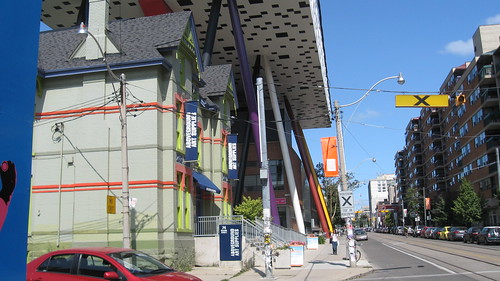I've always thought it would be interesting to do photo-essays of Toronto's streets that have a back alley quality to them, Hayden being a prime example as you mention. Though all of these are mixed, in the sense of having buildings that front on them as well, other "partial backalley streets" would include Victoria, Simcoe (north of Queen), Orde, Station Street, and Wood (between Yonge & Church - backalleyed on two sides by a City Park indifferent to it's Wood frontage and by buildings along Carlton, including MLG).
Mostly, they are ugly, which is probably why I never got around to doing photos of them.







